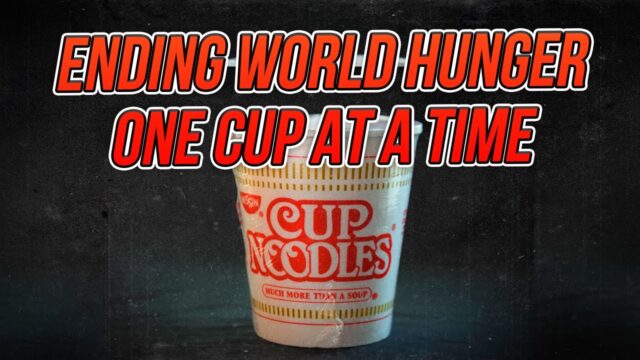“From Desperation to Innovation: How Instant Ramen Became a Lifeline in a World on the Edge of Starvation”
Ando’s invention first hit the market on August 25, 1958 under the brand name “Chikin Ramen.” Ironically, while today instant ramen is often one of the cheapest foods available, at the time it was considered something of a luxury item, with a single packet costing 35 yen – six times more than a bowl of fresh ramen. Consequently, sales were initially slow to take off. Thankfully, Ando proved himself a savvy businessman, and thanks to a series of clever marketing campaigns sales of Nissin products skyrocketed, with the company selling 13 million packages in its first year. This number quickly grew to 200 million servings in 1963 and 3.5 billion in 1968, making instant ramen one of Japan’s most ubiquitous and beloved foods almost overnight.
By the mid-1960s, however, market saturation caused Nissin’s sales in Japan to plateau, and Ando set his sights on a new market: the United States. With Japanese dishes like Sukiyaki all the rage in the U.S, Ando figured that instant ramen would be as big a hit with Americans as it was with the Japanese. His intuition proved correct, but it was on a business trip to the United States in 1966 that Ando made a fateful observation. Instead of preparing instant ramen in a pot and serving it in a bowl like the Japanese, Americans crumbled the noodles into Styrofoam coffee cups and poured hot water over them.
Inspired by this alternative preparation method, on his return to Japan Ando developed a brand-new product: Cup Noodles, in which the instant noodles were pre-packaged in a paper – later styrofoam – cup, combining the functions of cooking vessel and serving bowl into one conveniently portable package. Further innovations included the addition of dehydrated vegetables to the soup stock mix and a peel-away foil lid inspired by a container of nuts Ando had eaten on a trans-pacific flight. Wanting to make the product appear cosmopolitan and modern, Ando hired Otaka Takeshi – who created the logo for the 1970 Osaka World’s Fair – to design the packaging, which featured large English words in a bold psychedelic font and gold bands inspired by expensive dinner plates.












